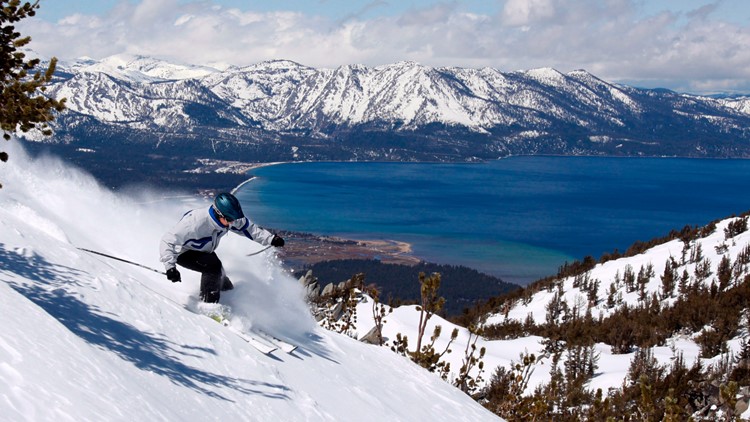SACRAMENTO, Calif. — California is about to enter the wet season.
The record warm summer is in the rear view window and now attention turns to how much rain and snow might fall in the new water year, which runs through Sept. 30, 2025.
Downtown Sacramento hasn't seen significant rainfall since early May, so opening the storm door comes with much anticipation.

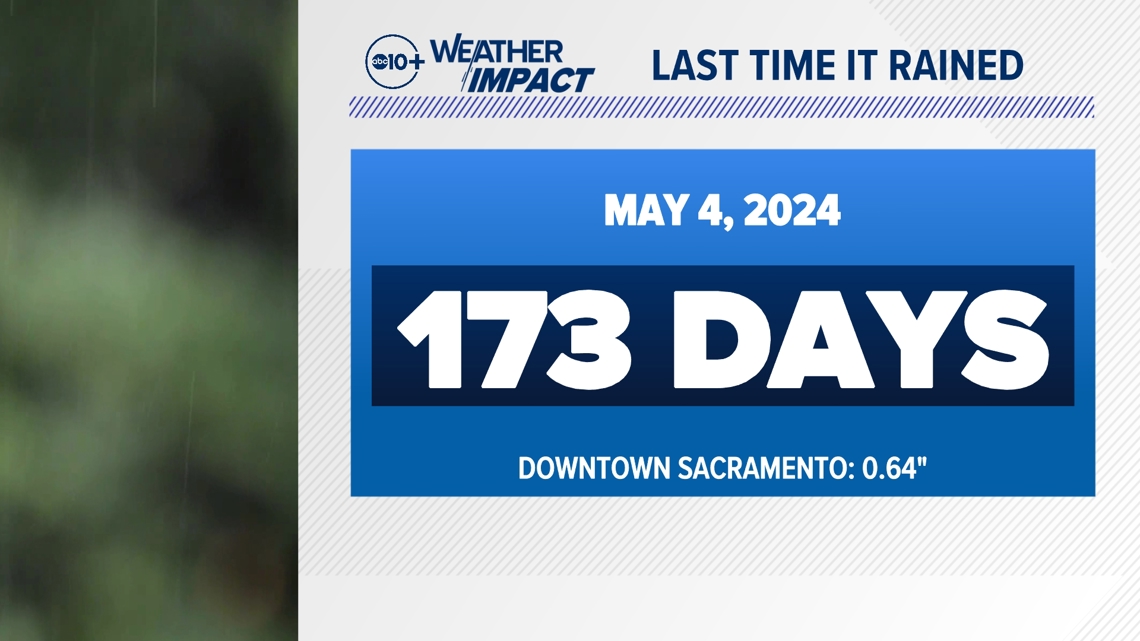
One indicator being watched is a developing La Niña pattern in the equatorial Pacific Ocean. La Niña occurs when water in central and east-central equatorial Pacific drops 0.5° C below average, influencing global weather patterns.
The latest findings from the National Oceanic Atmospheric Administration (NOAA) shows a developing weak La Niña emerging by November. This would be short lived, only lasting through March 2025.

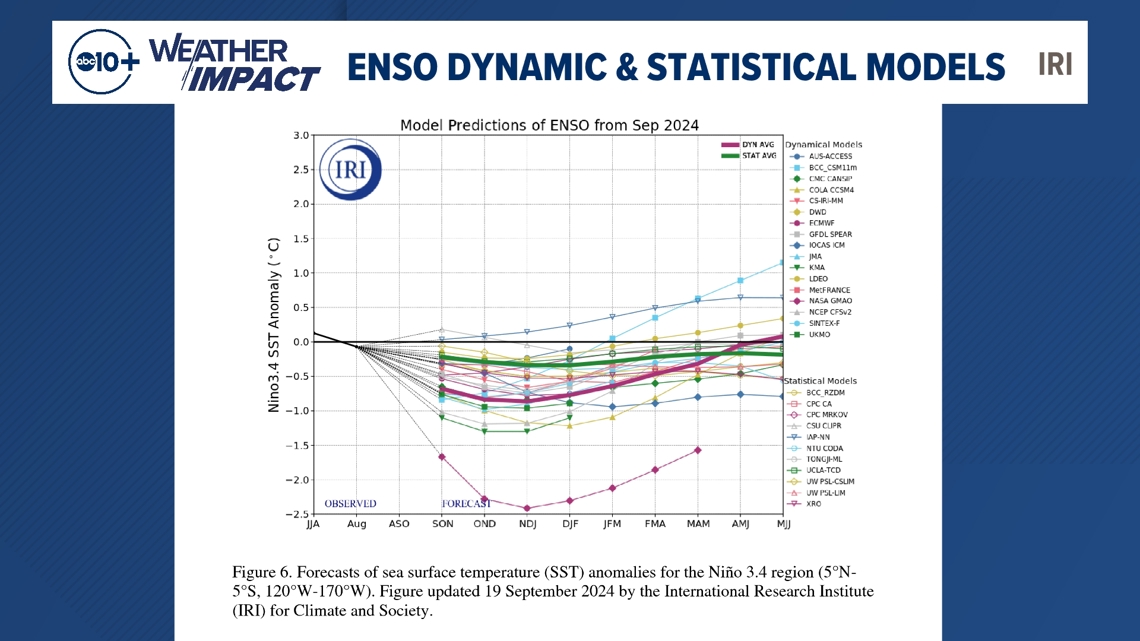
NOAA released its Winter Outlook through the Climate Prediction Center division showing similarities to average La Niña temperature and precipitation patterns.
The outlook, which covers December 2024 through February 2025, delivers guidance about temperature, precipitation and drought. For California, these months are critical since they account for nearly 50% of the state's yearly precipitation. Downtown Sacramento's wettest average month is January, followed closely by February and December.

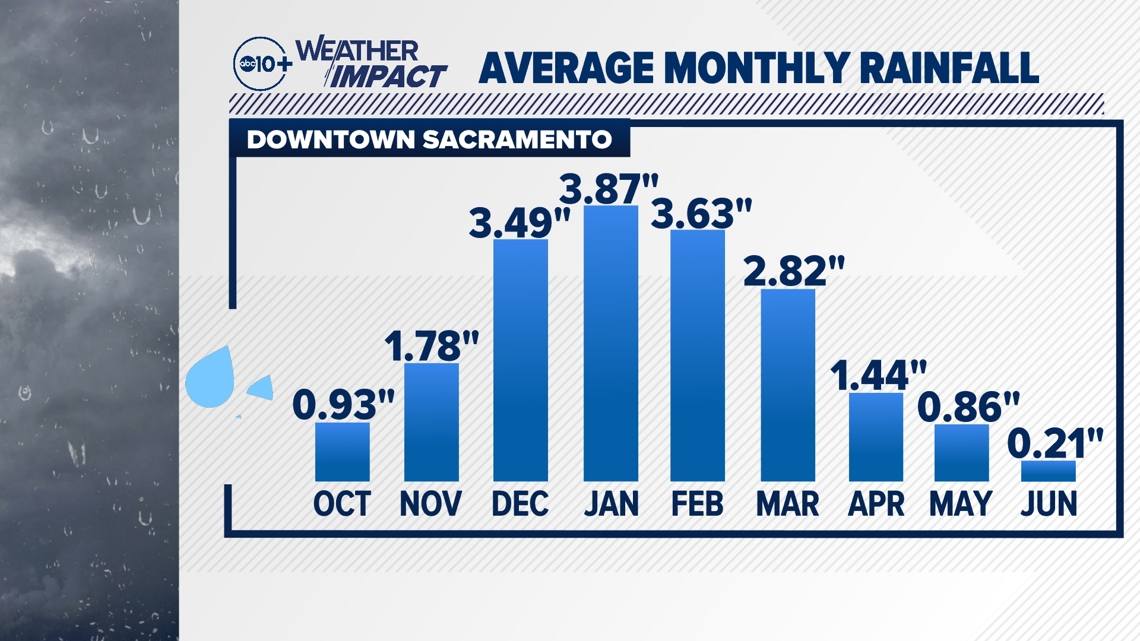
Weak La Niña years have not been strong influencers on precipitation. The chart below shows a most years favor dry conditions statewide. There are some difference when narrowing the focus to southern and northern California. The northern part of the state statistically has a higher likelihood of wetter conditions, but overall still favors drier than average years.

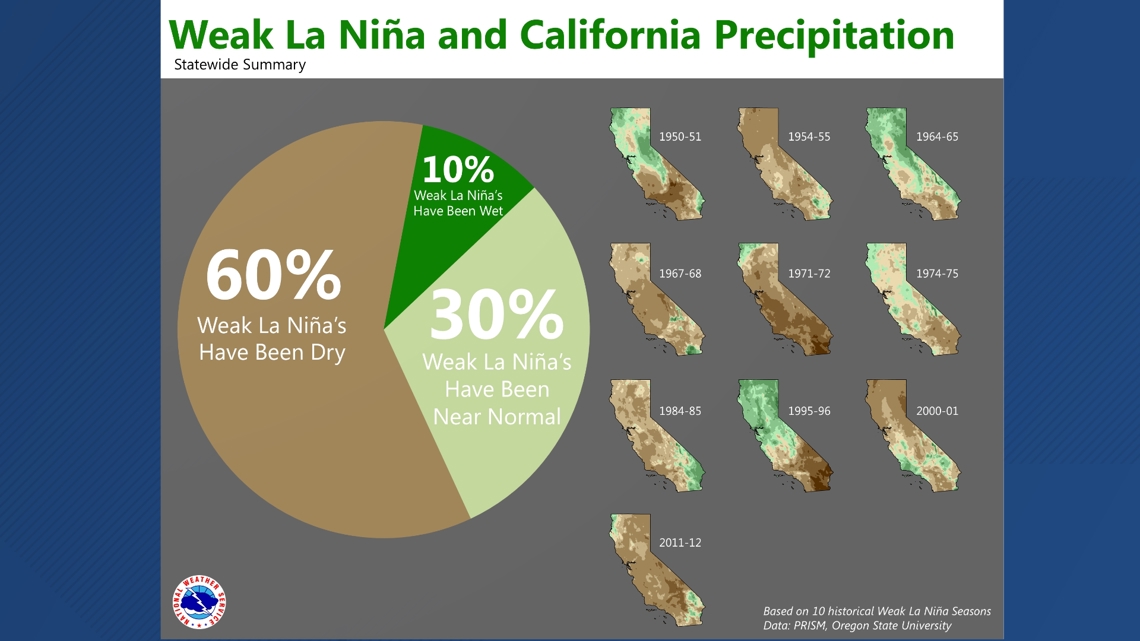
Temperature
- Warmer-than-average temperatures are favored for much of Southern California
- Northern and Central California remain in an area of equal chances of below-, near- or above-average seasonal mean temperatures

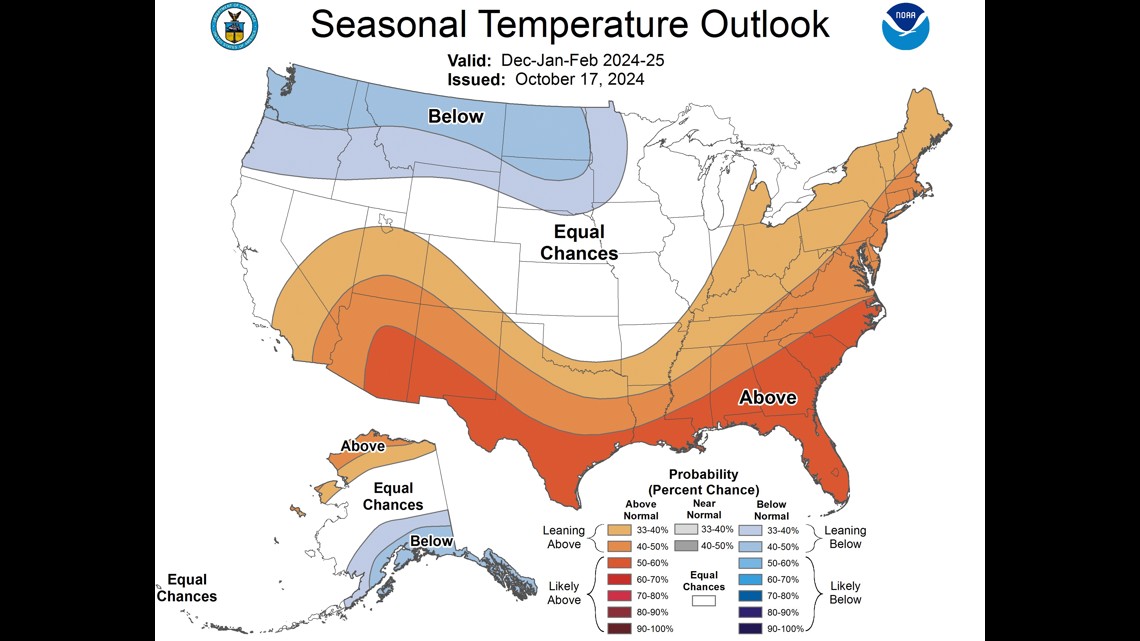
Precipitation
- Much of California has an equal chance of below-average, near-average or above-average seasonal total precipitation
- Southern California has a greater likelihood of below normal precipitation

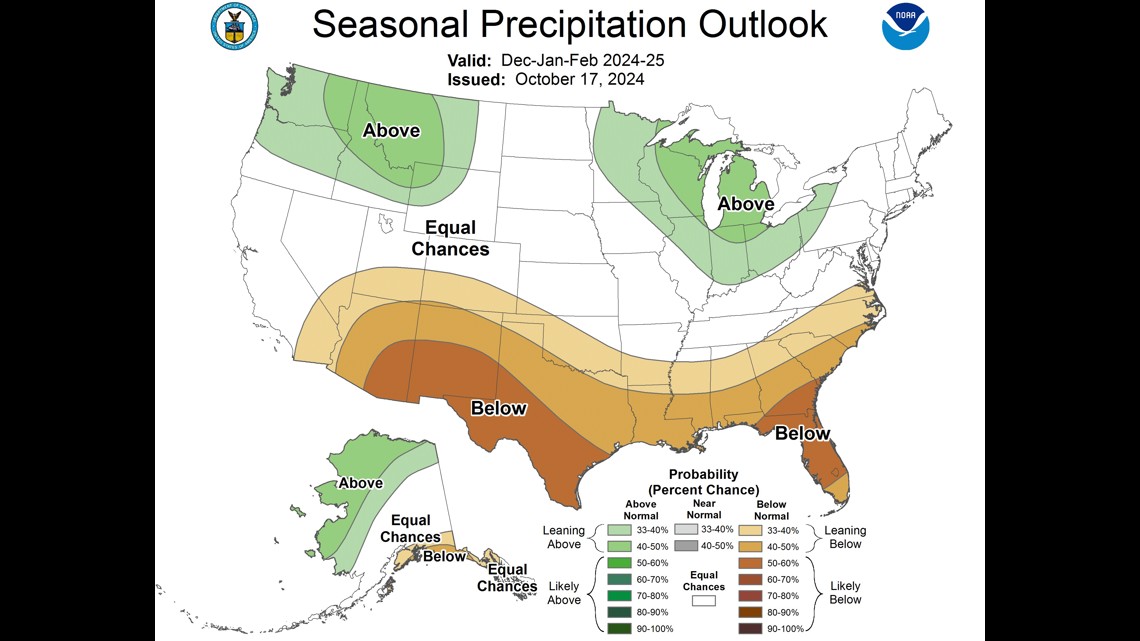
WATCH ALSO:


